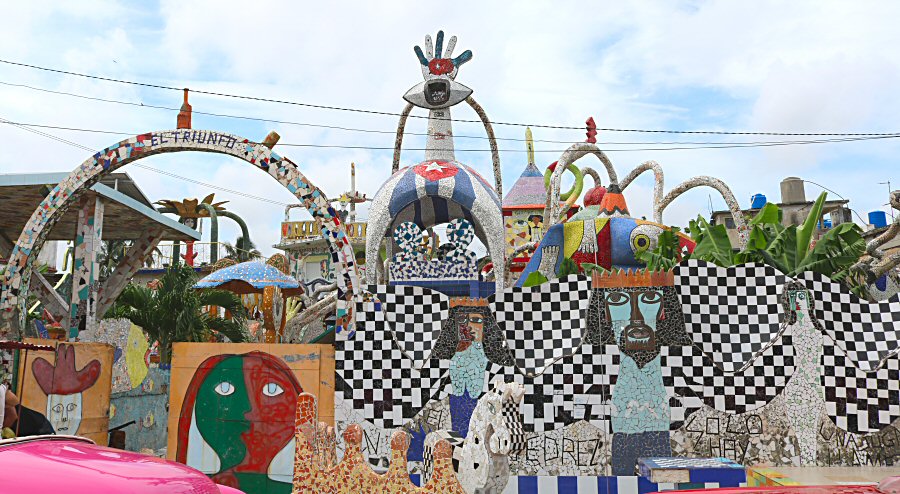
Fusterlandia is located on the 226th Street, at the corner of the 3rd Avenue in Jaimanitas.


Fusterland is a masterpiece of intricate tile work and kaleidoscopic colors, an excellent example of the street-art. It emerged in a struggling fishing village in the outskirts of Havana which has now been turned into an open-air art gallery.
Fusterlandia’s transformation into a dreamy folk art center began with José Antonio Rodríguez Fuster, born in 1946 in Caibarién, Villa Clara, buying a small wooden bungalow-style house in Jaimanitas which was a run-down fishing community, in 1975. Known as the Picasso of Cuba, Fuster is a versatile artist (ceramist, draughtsman, painter, engraver) who has over 600 collective and individual exhibitions not just in Cuba but around the world.
The artist first started by decorating his own house with colorful tiles and broken pottery. The mermaid, giant octopus, floating eye figures and ocean and fish depictions, chosen in the most vibrant colors, covering the walls of his large courtyard, attracted great attention of his neighbors. Every inch of his house was soon covered, extending from the roof to the garden and through to the pool, all transformed into a mosaic covered labyrinth. When the artistic activity in Fuster's house reached a point and stopped because there was no room left, his neighbors realize that this was a community project and hand their houses over to Fuster to include in this project. Thus, Fuster moved into the streets and surrounding buildings, finding the opportunity to decorate also the park benches, bus stops, post boxes and even the front of a local doctor's office in his own style so that no surface was left unturned. The spread of the project to the neighborhood and its appeal soon led to the emergence of new young artists who rushed to help.
Today, Fuster's work covers more than 80 houses and outbuildings in the neighborhood, and it is still growing. The artist's house operates under the name Taller Estudio José Fuster. Fuster can be found most days in his street side studio, still working with his neighbors and painting ceramics with his son. His greatest desire is to create the world’s largest mural.
The Fusterland example is a striking proof of how art shapes a community. When you look at the visuals in Fusterlandia, it is understood that the artist was greatly influenced by Antoni Gaudi and Pablo Picasso. Cubist elements are evident through the faces and figures of his mosaic creations. The artist’s house, located at the center of all artistic activity, is a sizable residence decorated from roof to foundations with art, sculpture and – above all – mosaic tiles of every color and description. It wouldn’t be wrong to say that the tiles have everything you could dream of, such as spiral walkways, wavy pools and sunlight fountains. The artist includes lush palm trees, fish figures, fishermen and the myriad of beaches, referring to the country he lives in. In addition, there are depictions of people playing and dancing dominoes, as well as Virgin Mary figures and massive floating eyes referring to Santería. He shows that he is not indifferent to the Revolution by including Fidel Castro, Che Guevara and Camilo Cienfuegos Gorriarán on a huge Granma Yacht ceramic. Brightly colored Cuban flags are noticeable in many places.
The neighbourhood is a full with tourists from all around the world who flock to admire this whimsical world.